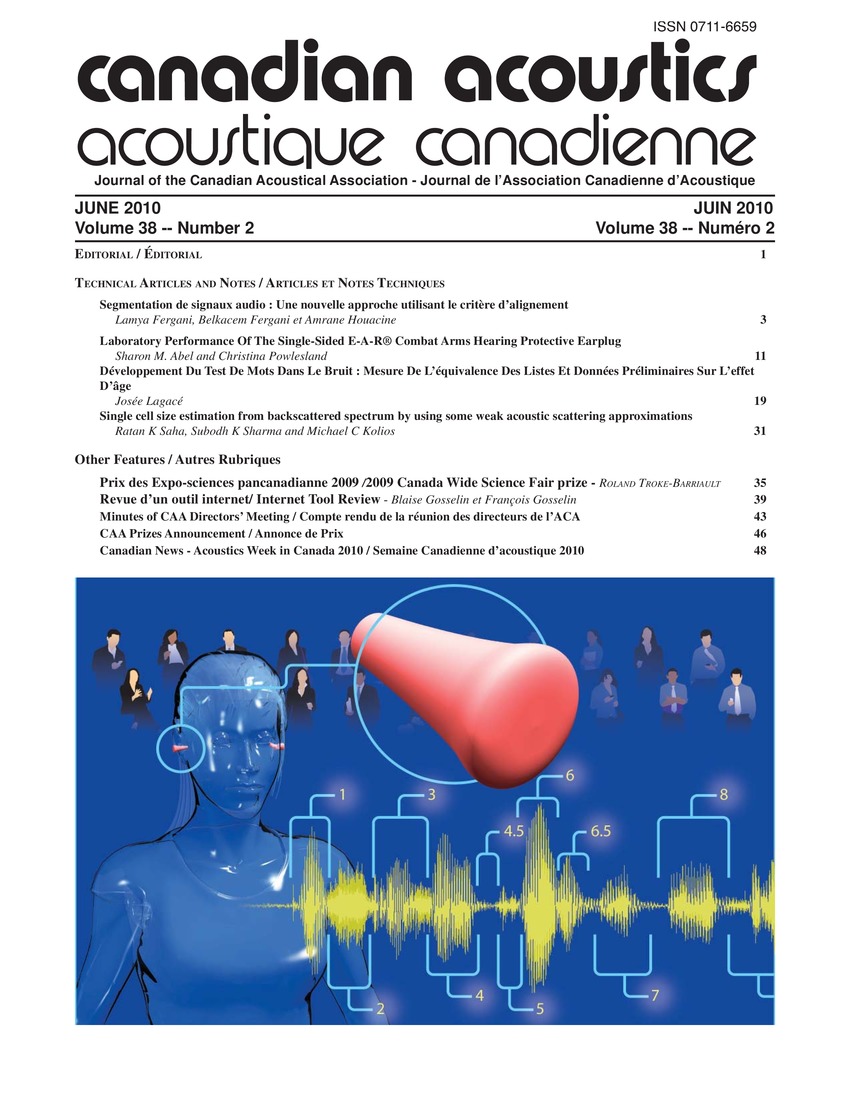Single cell size estimation from backscattered spectrum by using some weak acoustic scattering approximations
Keywords:
Backscattering, Born approximation, Cells, Estimation, Frequency estimation, High energy physics, Mammals, Ultrasonic applications, Acoustic Scattering, Back-scattered, Backscatter intensity, Cell size, High frequency HF, Incident waves, Mean diameter, Microscopic measurement, Modified born approximations, Scatterer size, Sea urchin, SIMPLE method, Single cells, Ultrasonic backscatter, Wave numbersAbstract
A method for the sizing of a cell in suspension by ultrasonic means is discussed. The technique uses frequency minima of the backscatter intensity pattern for an acoustically weak scatterer and provides a simple formula for scatterer size estimation in the framework of the Born approximation. The technique has been implemented here to examine performance of the Born approximation and a modified Born approximation in predicting size of a cell in a suspension. This was done by comparing the mean diameter of a cell obtained from optical microscopic measurements over many cells and that determined by employing these approximations only using the minima of measured high-frequency (10-65 MHz) ultrasonic backscatter spectra. Both approximations in estimating size of a scatterer worked with high accuracy (error < 3%) for scatterers like PC-3 cells (ka &asyum; 0.55-3.58) and sea urchin oocytes (ka &asyum; 1.54-10.03) where, k and a are the wave number of the incident wave and scatterer size respectively. This study suggests that this simple method can be used to estimate cell size.Additional Files
Published
How to Cite
Issue
Section
License
Author Licensing Addendum
This Licensing Addendum ("Addendum") is entered into between the undersigned Author(s) and Canadian Acoustics journal published by the Canadian Acoustical Association (hereinafter referred to as the "Publisher"). The Author(s) and the Publisher agree as follows:
-
Retained Rights: The Author(s) retain(s) the following rights:
- The right to reproduce, distribute, and publicly display the Work on the Author's personal website or the website of the Author's institution.
- The right to use the Work in the Author's teaching activities and presentations.
- The right to include the Work in a compilation for the Author's personal use, not for sale.
-
Grant of License: The Author(s) grant(s) to the Publisher a worldwide exclusive license to publish, reproduce, distribute, and display the Work in Canadian Acoustics and any other formats and media deemed appropriate by the Publisher.
-
Attribution: The Publisher agrees to include proper attribution to the Author(s) in all publications and reproductions of the Work.
-
No Conflict: This Addendum is intended to be in harmony with, and not in conflict with, the terms and conditions of the original agreement entered into between the Author(s) and the Publisher.
-
Copyright Clause: Copyright on articles is held by the Author(s). The corresponding Author has the right to grant on behalf of all Authors and does grant on behalf of all Authors, a worldwide exclusive license to the Publisher and its licensees in perpetuity, in all forms, formats, and media (whether known now or created in the future), including but not limited to the rights to publish, reproduce, distribute, display, store, translate, create adaptations, reprints, include within collections, and create summaries, extracts, and/or abstracts of the Contribution.


